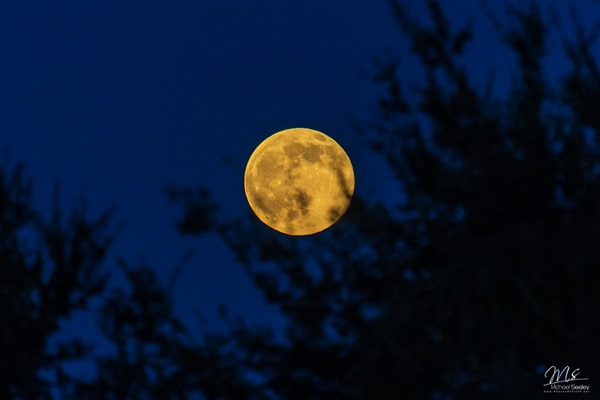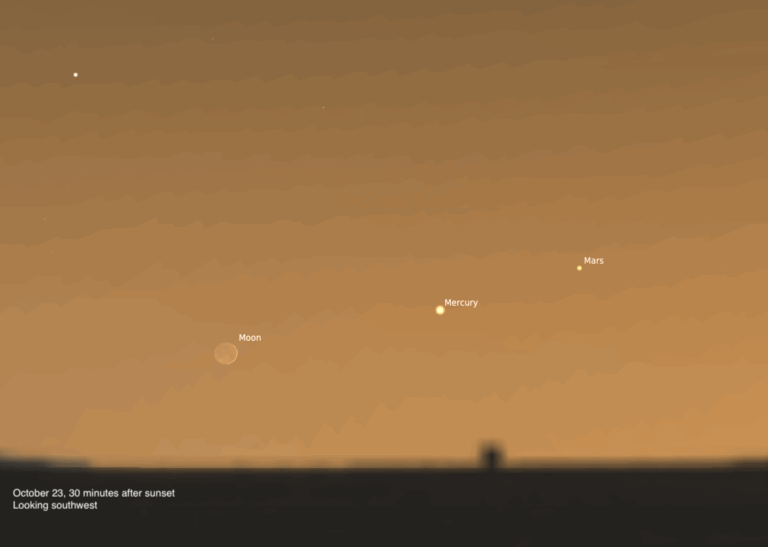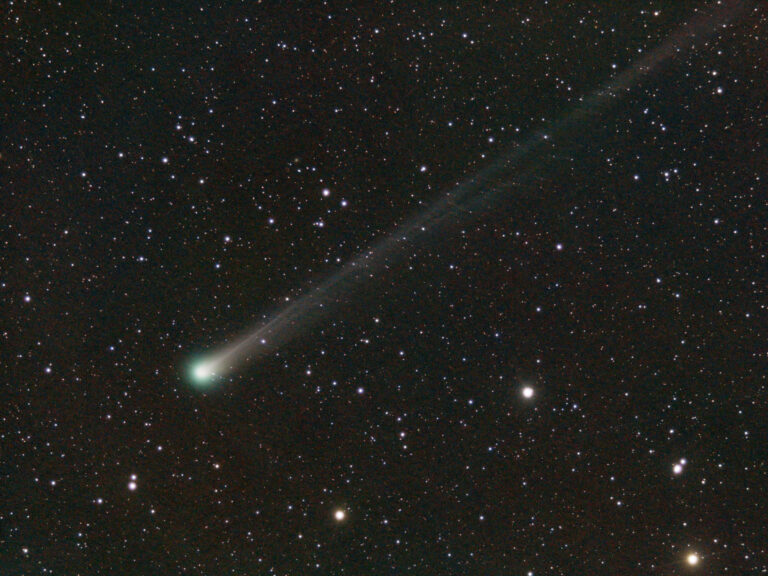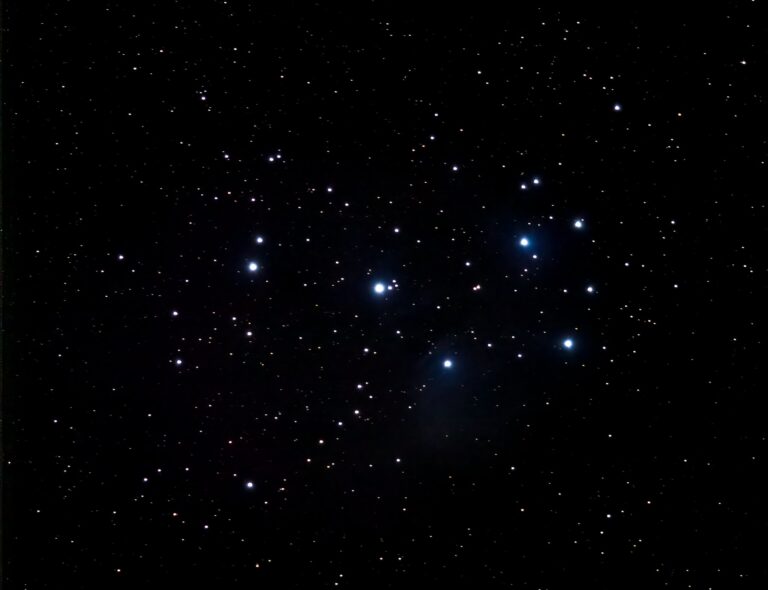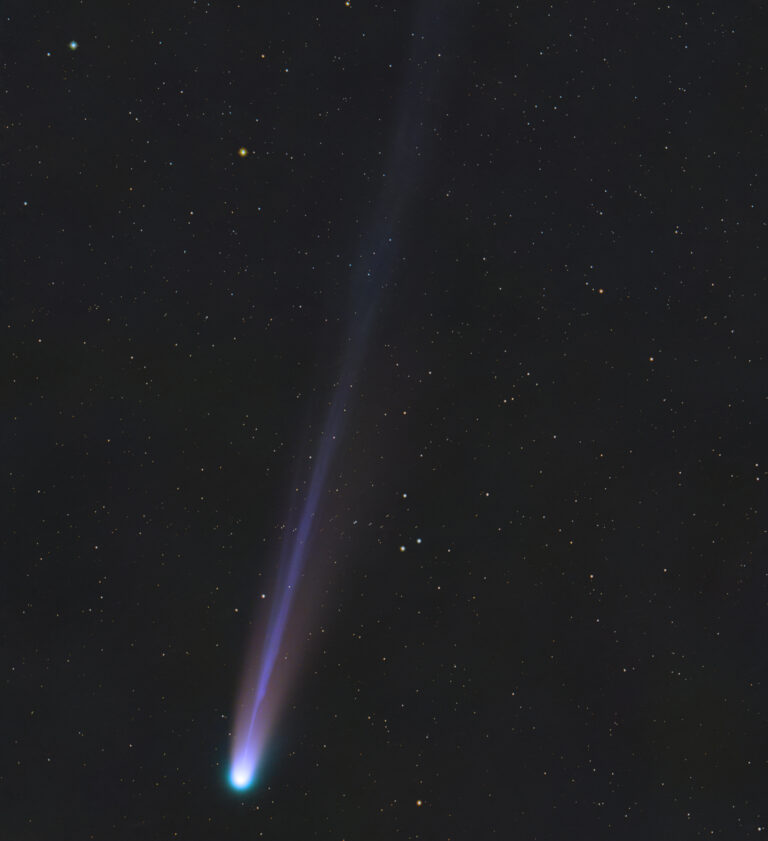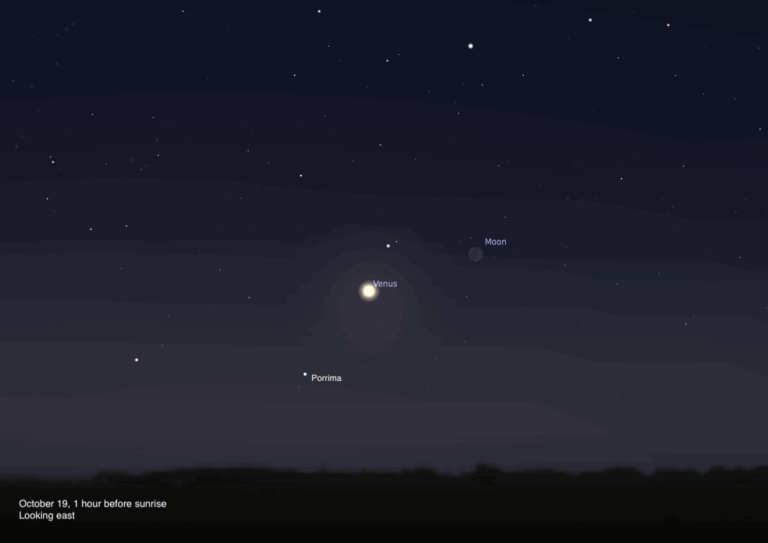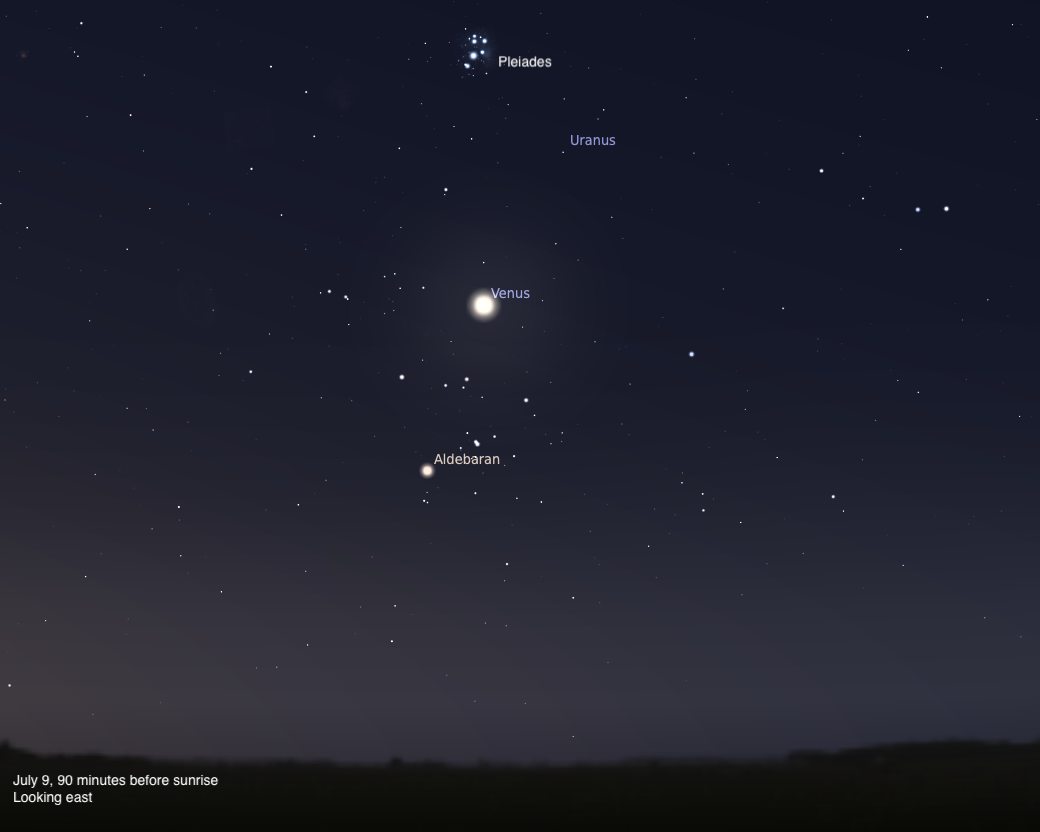
Key Takeaways:
- Venus, with a magnitude of -4.1, is currently visible below the Pleiades star cluster (M45) in the pre-dawn eastern sky.
- Venus is approaching Aldebaran (magnitude 0.9), a star in the Hyades cluster, and will pass close to it in the following week.
- Venus's telescopic appearance shows a 17" wide disk with 67% illumination, and this illumination will increase as it approaches the horizon.
- The Pleiades star cluster is also recommended for telescopic observation at low magnification.
Venus hangs below the Pleiades in the early-morning sky today. The bright planet is quickly closing in on Taurus’ brightest star, Aldebaran, which it will pass closely next week.
Step outside 90 minutes before sunrise to spot blazing Venus (magnitude –4.1) about 8.4° below the Pleiades open cluster (M45) in the east. The planet is more than 10° high and will continue rising as dawn begins to approach. About 5° below and slightly to the left of Venus is magnitude 0.9 Aldebaran, a red giant star that shines among the scattered suns of the Hyades open cluster sprinkled across the Bull’s nose. As Venus closes in, it will give Taurus the appearance of two bright eyes, rather than only one.
Through a telescope, Venus’ 17”-wide disk is now 67 percent lit. As the planet appears to sink toward the horizon day by day, it will wax as more of the cloud tops fall in sunlight.
While you’re up, take some time to enjoy the Pleiades through your telescope as well. Low powers work best for viewing the nearby open cluster, which spreads across more then 100’ of sky.
Sunrise: 5:40 A.M.
Sunset: 8:30 P.M.
Moonrise: 8:12 P.M.
Moonset: 4:01 A.M.
Moon Phase: Waxing gibbous (98%)
*Times for sunrise, sunset, moonrise, and moonset are given in local time from 40° N 90° W. The Moon’s illumination is given at 12 P.M. local time from the same location.
For a look ahead at more upcoming sky events, check out our full Sky This Week column.

